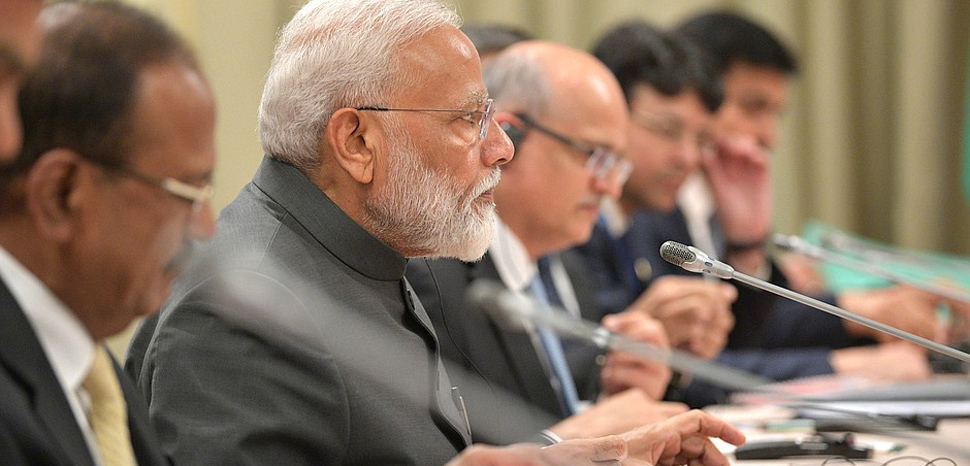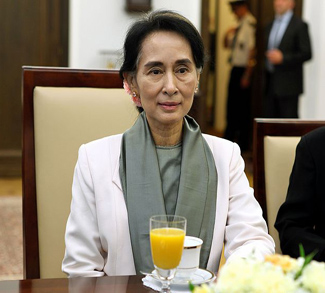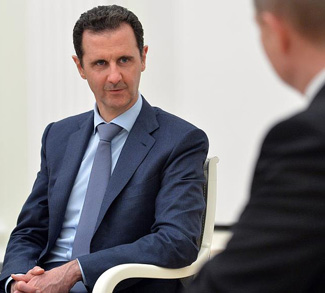Since the 1950s in India’s remote northeast, ethnic Naga insurgents along the border with Myanmar have fought the central government for either full independence or greater autonomy. During that time, the movement has been characterized by splits, infighting and failed peace agreements, while major outbreaks of violence have been largely contained by a succession of fragile ceasefires.
Now, after two decades of talks between the government and the largest rebel faction, the National Socialist Council of Nagaland-Isak Muivah (NSCN-IM), a breakthrough appears to be edging closer. After the re-election of Prime Minister Narendra Modi earlier this year, the leader of his Bharatiya Janata Party (BJP) in Nagaland – state Deputy Chief Minister Yanthungo Patton – expressed confidence that Modi would ‘solve the Naga political issue during his time’, adding ‘let us all sincerely pray for him.’
The government is looking to finalize a framework peace accord signed with the NSCN-IM in 2015. At the time, Modi said ending India’s longest-running internal conflict would help bring ‘peace, security and economic transformation to the northeast’; a stated priority of his administration. Yet four years on, the deal has still not been finalized and frustration is rising. Despite the delay, amid concern that the aspirations of the NSCN-IM and other factions may not be satisfied, is a breakthrough imminent?
Tracing the history of Nagaland’s Insurgency
Nagaland is located in India’s restive northeast, and is one of seven states separated from the rest of India by the narrow Siliguri Corridor. Nagas are predominantly Christian and English-speaking, while the group as a whole consists of 17 major tribes and many smaller sub-tribes – many of which retain distinct local customs, dress and languages. Naga tribes were united under Angami Zapu Phizo, who formed the Naga National Council (NNC) in 1947, shortly before India’s independence from Britain.
An initial nine-point agreement was signed in which Naga areas would be governed within the state of Assam for a period of ten years, during which time the Nagas were to be afforded limited powers and land rights. However, Phizo rejected the deal and declared independence for the Nagas, and the idea of Naga sovereignty spread through the tribes. A referendum held in 1951, in which 99% living in Naga areas allegedly voted in favor of Independence, was rejected by the Indian government.
In the early 1950s, guerrilla warfare broke-out and violence escalated, with Naga insurgents raiding army and police outposts. The army launched a crackdown, enabled by the imposition of the Armed Forces (Special Powers) Act in 1958, which remains in place today. Phizo established a Naga Federal Government (NFG) and Naga Federal Army (NFA) in the mid-1950s, which replaced the NNC as the organizations at the forefront of the Naga uprising. India ceded some ground and allowed Nagaland to become a separate state in December 1963, while the NNC, NFG, and NFA were all labelled unlawful.
The first peace breakthrough came in 1975, when the Shillong Accord was signed by the NNC, NFG, and the government, whereby the armed factions agreed to accept the Indian constitution and drop their demand for full independence, while agreeing to turn in their weapons to the authorities.
However, many Nagas were not satisfied and rejected the agreement. In 1980, the National Socialist Council of Nagaland (NSCN) was formed to resume the armed struggle. The NSCN split into two main factions in 1988 amid a leadership struggle and ideological dispute, with Isak Muivah continuing with the NSCN-IM and SS Khaplang forming the NSCN-K, based across the border in Myanmar’s northern Sagaing region. Inter-factional clashes and rivalry led to bloodshed, while later splits further divided the Naga rebel movement. Such splintering has made the conflict intractable and difficult to resolve.
The two NSCN factions remain dominant forces, with the NSCN-IM campaigning for an autonomous Naga region extended from Nagaland to include Naga-inhabited areas in the neighboring states of Assam, Arunachal Pradesh, and Manipur, while the NSCN-K seeks the inclusion of parts of Myanmar.
Twenty-two years of peace talks with the NSCN-IM
Peace talks between the government and the NSCN-IM began in 1997 after a ceasefire was signed. More than 80 rounds of talks have since been held, and the level of violence has gradually receded. Dialogue led to a framework agreement being signed in August 2015 between Modi and NSCN-IM leader Muivah, which was heralded at the time as a major breakthrough and an opportunity to end hostilities. Modi said he hoped the deal would be a ‘signal to smaller groups’ to give up their arms.
Yet four years later, the details of the framework agreement remain sketchy, while little discernible progress has been made toward finalizing and implementing the deal. Talks have continued with the NSCN-IM and six other Naga insurgent groups at the negotiating table, while the NSCN-K has fought on both sides of the border. After a four-year stalemate, Modi’s re-election has given fresh impetus to the peace process amid recent reports – unconfirmed by either side – that a final accord is close.
Could a final accord with the NSCN-IM end fighting?
The 2015 framework agreement has been criticized as vague, and it does not seem to be all-encompassing, though few details or specifics have been made public. What we do know, is that the framework accord aims to enhance recognition and acceptance of Naga history and culture, and is thought to be based on the concept of ‘shared sovereignty’ with some kind of ‘special status’ for Naga areas within the national constitution and administrative system. However, India is opposed to ceding territory or altering the constitution, and is not open to re-drawing the boundaries of Assam, Arunachal Pradesh, or Manipur.
This means the core NSCN-IM demand for full sovereignty or political autonomy over all Naga areas in northeast India, including areas in neighboring states, is unlikely to be met. Without such a settlement, it is hard to see how rebel leaders will be satisfied with a deal adhering to existing lines.
A second stumbling block to peace is that the powerful NSCN-K faction commanded by SS Khaplang remains excluded from the peace process and appears certain to reject any final deal signed by the NSCN-IM. Bringing the NSCN-K to the negotiating table is essential if a fuller resolution to the Naga issue is to be found. Even in this event, the fact that the NSCN-K envisions parts of the Sagaing area of northern Myanmar being incorporated in a future cross-border Naga region, further complicates the issue. Myanmar is not prepared to give up any of its territory, and has attempted to engage the NSCN-K through its own state-led peace process, called the Nationwide Ceasefire Agreement (NCA).
Myanmar’s NCA process aims to end multiple long-running insurgencies in volatile border regions of the country, which similarly to the conflicts in northeast India, were sparked after Myanmar secured independence from Britain. The government in Myanmar has cracked down on the NSCN-K in recent months, making a peace breakthrough in Sagaing a bleak prospect. Other, smaller Naga armed units on the Indian side of the border may also reignite their armed campaigns if they are not satisfied with the outcome of the NSCN-IM dialogue. The splintered nature of the movement is a barrier to peace.
Symbolism vs sovereignty
If negotiations between the Indian government and the NSCN-IM continue down their current path, any finalized agreement in the coming months looks likely to cover mostly symbolic issues. This may result in greater nationwide recognition of and respect for collective Naga identity, the formation of new cultural bodies, and some form of devolution through new administrative structures. The NSCN-IM will also hope that important identity issues, such as the adoption of a Naga flag, can be resolved.
However, the core issue at the heart of the insurgency – the desire for a territorially-expanded Naga region covering areas in Assam, Arunachal Pradesh, Manipur, and possibly also in northern Myanmar – will not have been resolved. This means that almost inevitably, some Naga rebels will continue to fight. The non-participation of the NSCN-K places them at the forefront of resistance, and for them to come to the table, a more inclusive and all-encompassing peace process might later be required.
Yet if a deal with the NSCN-IM does get over the line, it could serve as a vital starting point and lay the foundations upon which future peace efforts could be constructed. In a region where violence has persisted since the 1950s, a partial peace deal and an improvement in ties with the NSCN-IM is better than nothing at all. PM Modi may then have the platform to engage with other Naga groups, as he seeks to negotiate a final end to the conflict; a key component in his plan to stem violence in India’s volatile northeast, and open-up the region as a strategic trading gateway to Southeast Asia.




